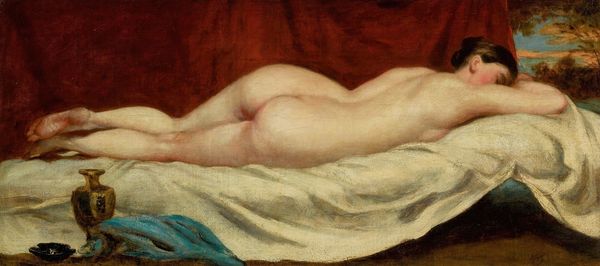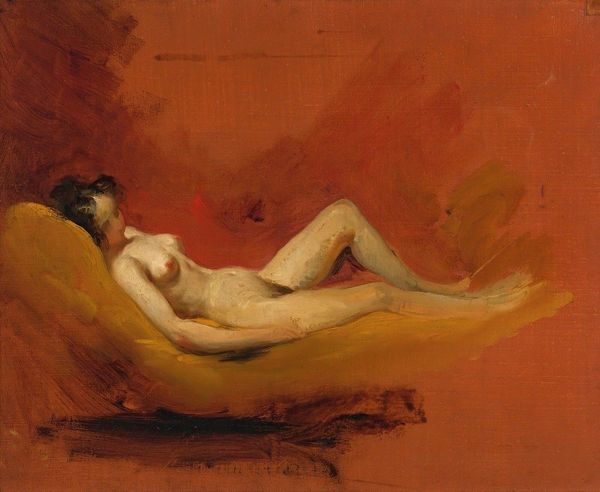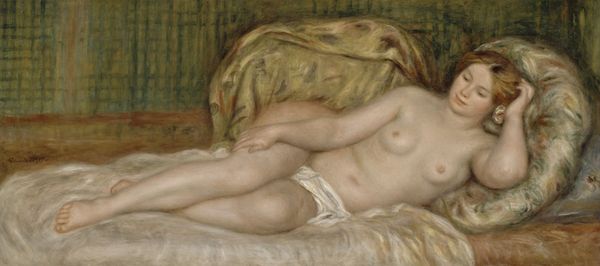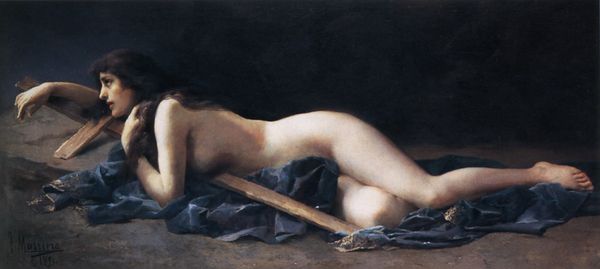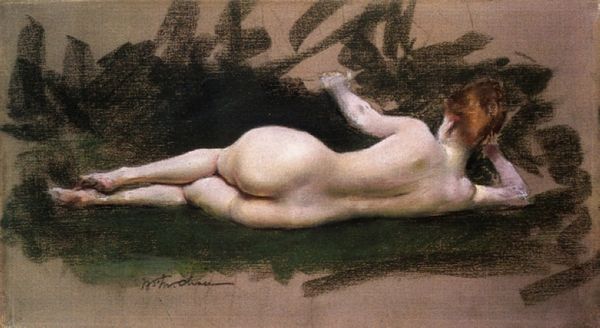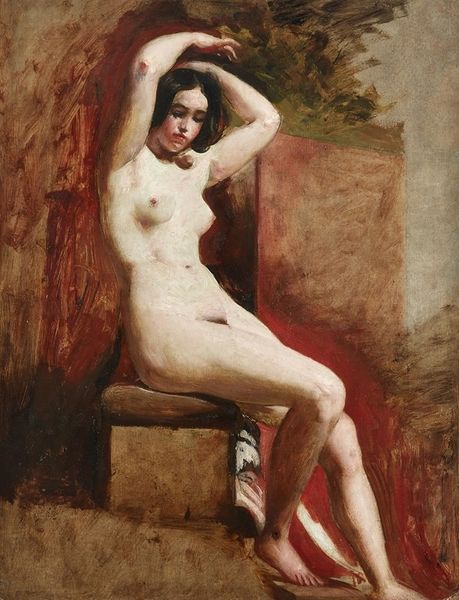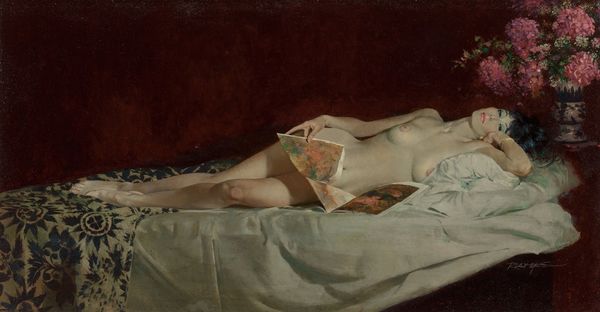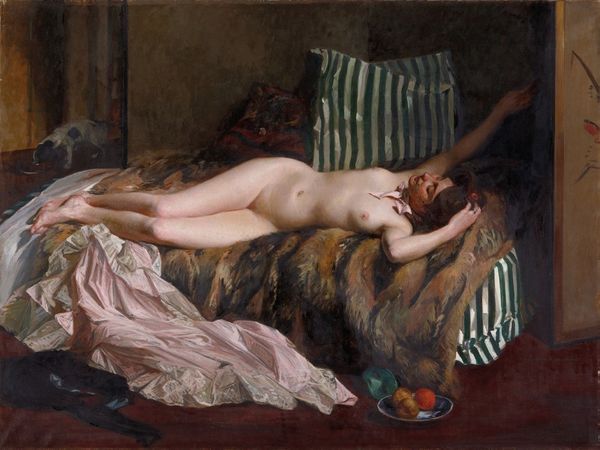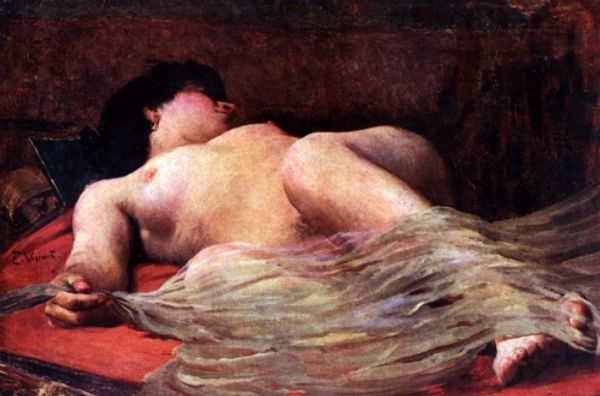
Copyright: Public domain
Curator: Here we have William Merritt Chase’s "Nude Recumbent," painted in 1888. What's your initial response? Editor: The color palette strikes me immediately. The warmth of the rust-colored fabric against the almost luminous skin creates an interesting tension. There's something very tactile about the way the paint has been applied here too; almost as if I could feel the texture of the surface. Curator: Indeed. Notice how Chase uses the impasto technique—thick applications of oil paint—particularly in the rendering of the figure and the fabrics. This tactile quality contributes to the work’s inherent tension, heightening the viewer's sensory engagement. I find his careful composition to be compelling, in this piece. The body stretches diagonally across the picture plane, activating the space with both balance and implied movement. Editor: Yes, and thinking about that tactility, what sort of fabric is supporting her form? And where was this made and displayed? The social context certainly colors how we perceive a reclining nude like this. Was it displayed publicly? Was he selling the male gaze? These considerations impact my understanding, beyond the sheer composition or technical application of the paint. Was she paid fairly? Curator: The social factors of production are of course noteworthy, but look at how the shadows gently define the muscles of the back and the curve of the hip. I appreciate how Chase employed subtle shifts in value to create a sense of three-dimensionality. The effect produces the image in such a visually enticing manner, inviting close observation and study, allowing the audience to explore and develop the artistic expression in the female subject’s sensuality. Editor: True, but this invites us to see the figure divorced from her real identity. Who made the fabric beneath her, for that matter? What dyes colored that lush surface? There are invisible laborers behind what you're calling a “study of sensuality.” The means of production shape what you see. Curator: Perhaps, yet one can still engage with the artwork without collapsing into those extra-aesthetic conditions you introduce to interpret it. We see in the underpainting a clear intentionality from Chase regarding light and form as an ideal. It allows one to concentrate specifically on these intrinsic details. Editor: I think both the sensuality, as you call it, and the labor are valid interpretations. It all enriches the viewing experience. Curator: Indeed. It gives us both much to ponder as we consider Chase’s oeuvre and its implications for the study of nudes within the canon of art history.
Comments
No comments
Be the first to comment and join the conversation on the ultimate creative platform.


